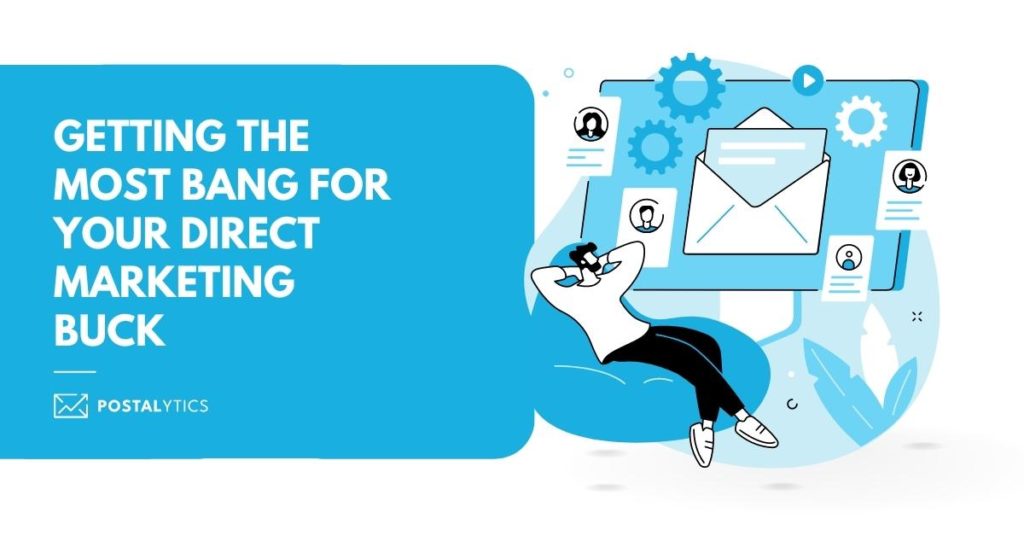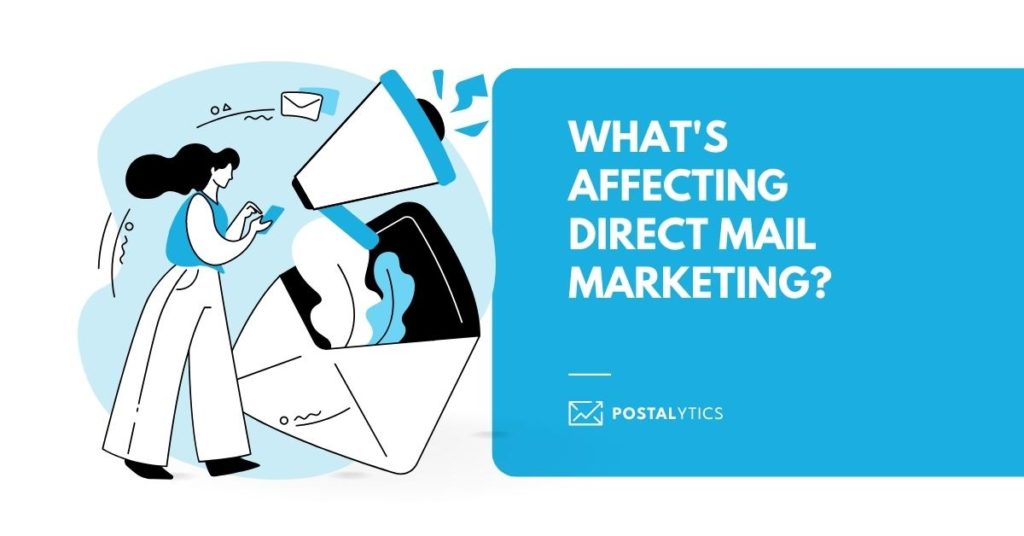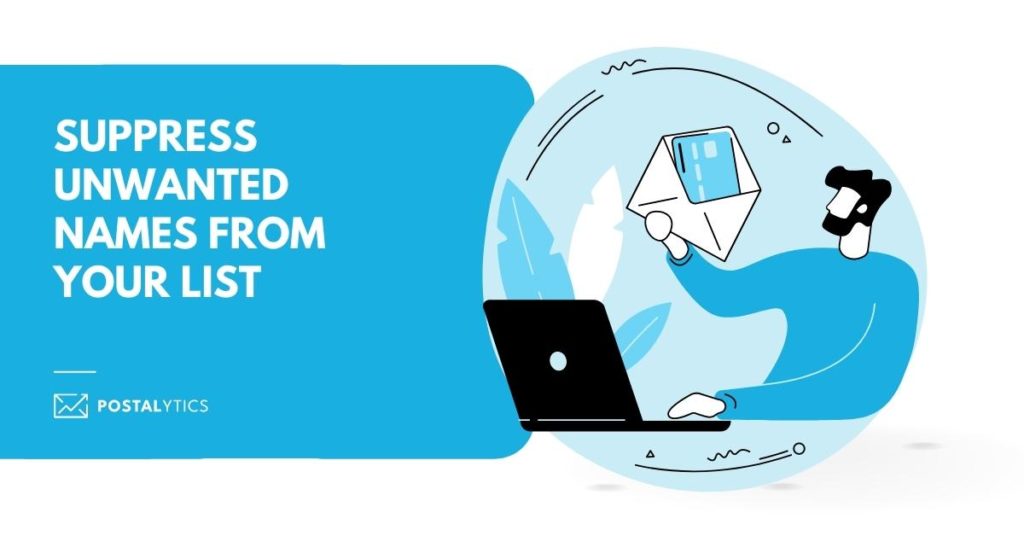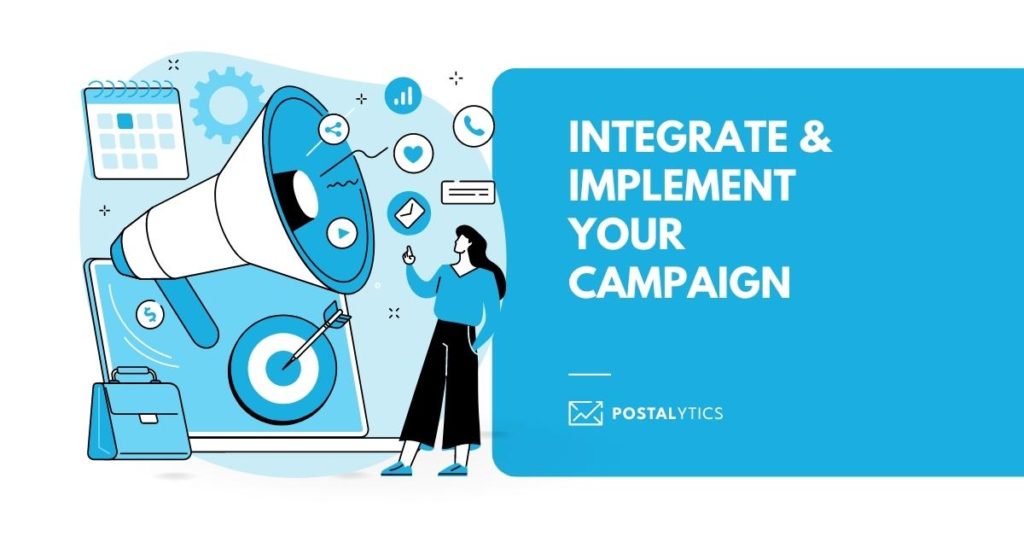
Are you wondering how to get the most bang for your marketing buck? You’re not alone.
As the postcard marketing & mail automation platform, we spend a lot of time analyzing channels that generate the best returns on investment (ROI).
Many marketers favor email over postal mail because email provides nearly instant verification of list quality and deliverability. Shortly after mailing, an email service provider can tell you how many messages bounced back. Bounces happen when an email address doesn’t exist, or a receiving email server blocks the message.
Rather than waiting until the campaign has been executed, delivery improvements for postal mail happen before a mail piece is even printed. When marketers clean and fine-tune their mailing lists, they can expect a greater return on their investment in physical mail.
While the cost per email is low compared to postal mail, physical mail generates far better conversions. Postal mail has a higher upfront investment, though. Marketers should take extra steps to be sure their mailing data is in great shape.
Table of contents
What’s affecting your direct mail campaign?

Here are some factors affecting the effectiveness of postal mail campaigns:
Standardized and Valid Postal Addresses
If “123 Elm St” is in the database, but the true address is “123 Elm Ave”, the USPS may deliver the mail piece to an incorrect address, or they could consider the mail undeliverable.
Updated Moves
We are trying to reach customer Charles A. Smith. Did he move? Do we have his new address?
Duplicate Data
Is Charles in the database more than once? Remove the extra entries. Duplicates represent double postage and twice as much printing. Receiving duplicate mail is also a customer irritant.
Suppression of Addresses
Suppress contacts unlikely to respond to your offer. Prison inmates and deceased persons are examples. Marketers may also want to suppress records based on geography, age, income, housing type, or gender.
Direct mail is a necessary ingredient in every comprehensive marketing plan. Postal mail, combined with email, web, and social media creates a multi-pronged approach that is far more effective than each medium alone.
Postal Service Programs
The USPS provides data quality methods and certifications licensed to mailing services and corporations. As you might imagine, address data is continually updated to reflect all kinds of address changes. The Postal Service itself does not engage in mailing list enhancement or updating but relies on two principal address quality programs meant to improve the deliverability of the mail.
CASS (Coding Accuracy Support System)
CASS is a certification from the Postal Service. It verifies the address coding software used by mailers or services meets the USPS’ standards for accuracy. The CASS certification program assures developers, service bureaus, and commercial mailers of the quality of address-matching software. CASS-certified software is used to verify that required elements of postal addresses are present, spelled correctly, and formatted according to postal specifications. CASS is about correct addresses, not the people that live or work there.
NCOA (National Change of Address)
NCOA uses address change notifications submitted to the USPS by individuals, families, and businesses. If you have completed a move update card or an online move update form, you have contributed to the Post Office’s NCOA database.
Keeping up with people who move is a challenge. Some 15% of U.S. residents move each year. The USPS maintains NCOA data for moves going back 48 months. To combat Undeliverable as Addressed (UAA) mail, the Post Office requires mailers to process data against the NCOA database within 95 days of the mailing for any mailing claiming postage discounts.
The benefit of good address hygiene is getting more mail pieces into the hands of the intended recipients. Postalytics analyzes addresses and performs all required data quality steps before processing your mail.
Suppression

Suppression does not mean “deletion.” Suppressed names are still in the list but they are not included in a specific mailing. Suppression is not the same as targeting. Targeting is based on data, usually a code. If your buying history data shows customer Hank Smith bought a hammer, you would include him in a mailing promoting a sale on nails. You might not include him in a campaign for scented candles.
Suppression compares your data file with a list of contacts with known attributes indicating they should be excluded from certain campaigns. Software will tag any customer or prospect found on a suppression list and hold them back from the mailing. Popular suppression databases include:
DMA Suppression
DMA suppression identifies individuals registered with the Direct Marketing Association (DMA) Mail Preference Service. People who register do not wish to receive unsolicited advertising mail.
Deceased Suppression
Deceased suppression identifies deceased individuals using a database dating back 15 years. The Social Security Administration provides this information.
Prison Suppression
This service identifies and tags incarcerated individuals.
Business or Residence
This service identifies if an address is a business or a residence. Some offers are appropriate for a residence. Others are better for a business.
Implementation

Digital marketing channels are increasingly saturated. The response rate for digital campaigns is lower than ever. Direct mail offers tangibility, permanence, and a visual experience. It cuts through the digital chatter.
Postalytics provides enterprise-grade direct mail automation with workflow, integration, and analytics.
Integrate Postalytics with your existing CRM, marketing automation, or eCommerce software and harness the power of automated direct mail marketing. From one to 100,000 mail pieces, the Postalytics direct mail platform makes your current digital channels more responsive. Ensuring your mailing list includes only accurate addresses and likely buyers heightens the return on a direct mail investment.
About the Author

Dennis Kelly
Dennis Kelly is CEO and co-founder of Postalytics. Dennis joined Boingnet, the predecessor to Postalytics, in 2013. Boingnet was focused on providing print and direct mail marketing service providers the ability to add digital marketing channels to their direct mail campaigns. Postalytics is Dennis’ 6th startup. He has been involved in starting and growing early-stage technology ventures for over 30 years and has held senior management roles at a diverse set of large technology firms including Computer Associates, Palm Inc. and Achieve Healthcare Information Systems.
